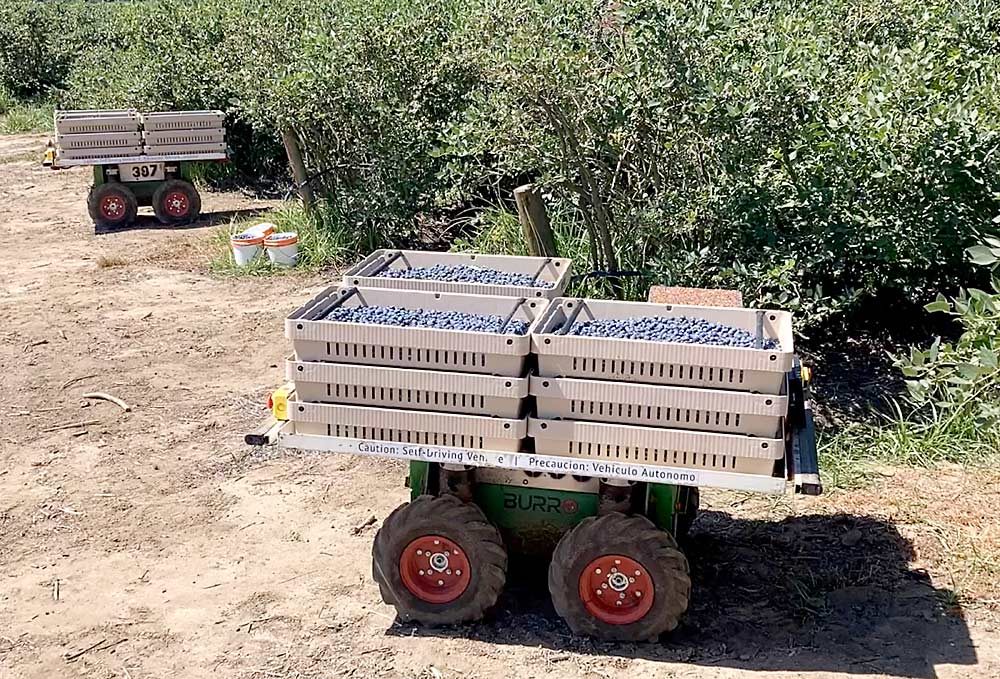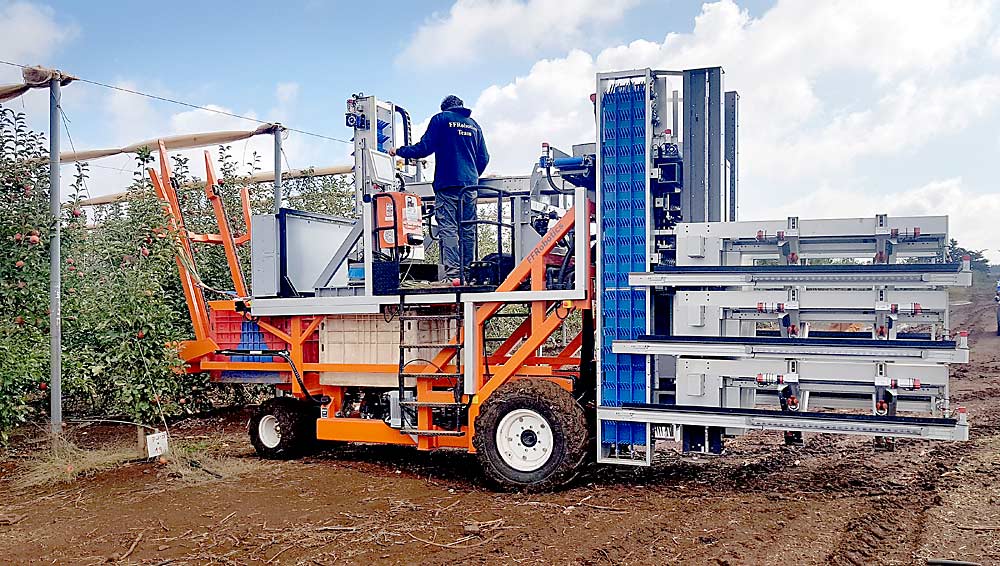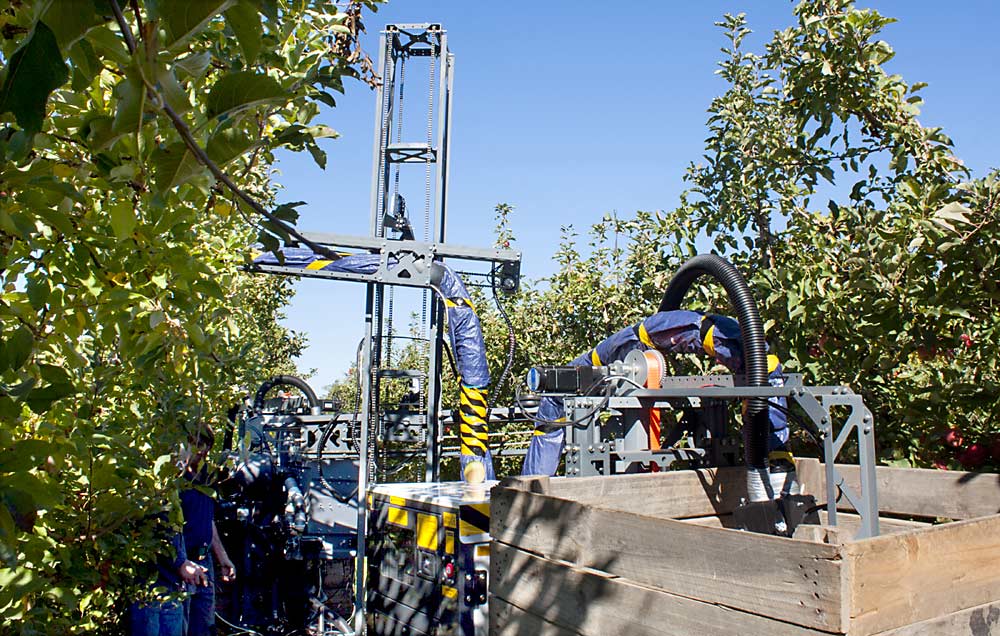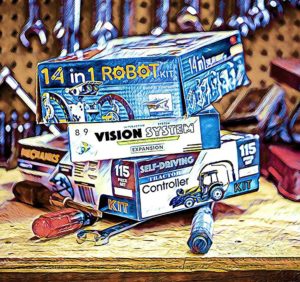Specialty crops lag agronomic crops when it comes to harvest automation because the needs of each crop are so, well, specialized.
“Specialty crops are 90 percent of the farm workforce, but each is a tiny niche thing,” said Charlie Andersen, CEO of Burro. “And automation is really, really hard to do. The challenge automation companies run into is this absurd risk of these complicated endeavors and these small markets that are unattractive to investors.”

That’s why Philadelphia-based Burro, which makes small, autonomous farm vehicles popular with table grape growers for hauling fruit during harvest, joined in a “big tent” effort with a dozen other ag tech companies led by Western Growers. Through strategic planning and leveraging shared technologies, the effort aims to create the scale needed to accelerate development of harvest solutions for specialty crop growers.
“If we are doing mobility in grapes and someone wants to tackle harvesting or data collecting or UV light, instead of building a platform from the ground up, in our minds, there’s no reason why they can’t layer it onto our platform like you hook a disc to a tractor,” Andersen said.
That layering vision, using common platforms (both literal and technological) is the foundation of the Global Harvest Automation Initiative. Announced earlier this year, the project has support from the Washington Tree Fruit Research Commission, the California Table Grape Commission and the California Fresh Fruit Association, among others, said Walt Duflock, Western Growers vice president of innovation.
“We’ve got all these innovators doing harvest automation,” Duflock said. “They can do it faster” by leveraging common technologies and interfaces. He calls this a tech stack: Building blocks such as autonomous platforms, sensors and data interfaces many different tech developers can use as they focus on the specialized end effectors needed to harvest a particular specialty crop.
The initiative assembled a cohort of participating companies and a team of experts from tech companies and different specialty crop sectors. They met in person for the first time in late June, after months of Zoom meetings. Keith Veselka, a Yakima Valley grower serving as a tree fruit expert, said that while the needs of lettuce, strawberry and apple producers may seem unique, there are far more commonalities.
“We’re all battling not having enough labor and looking to augment,” he said. “It was an amazing meeting with a lot of smart people focused on food security and tackling automation on farms.”
Another tree fruit expert, Scott Jacky of Red Rooster Consulting, said his role, along with Veselka and Mike VanPelt of Kershaw Fruit, was to educate the tech folks about what goes on in the orchard and what growers need.
“We shared what we’ve seen, what worked, what didn’t work,” Jacky said. “For example, we told them, ‘Don’t even think about changing the bin size.’” For engineers, it might seem like a small change, but for the industry it would be a non-starter.
Going in, Veselka wasn’t sure exactly how it was all going to work. “I left the meeting thinking that we’re going to build the industry an iPhone and everyone else is going to come and build the apps,” he said. Prior to the initiative, it was as if anyone who wants to build an app had to start from scratch and build the whole iPhone, he added.
Duflock said the team agreed there was a need for a common hardware product that “provides a data connectivity hub that plugs everything in everything else.” The next steps are to figure out the exact specs, who will build it and how to make sure it meets the needs of as many tech developers as possible, to maximize efficiency.
“There are really exciting things coming out of this now that we have alignment on where we need to go,” Duflock said. “Now the question is how fast can we get there.”
Two tree fruit harvesting companies participating in the effort said that automation equipment is so complex, it just makes sense to collaborate strategically with other tech developers.
“As a startup who understands its uniqueness and strong knowledge in our field, we do believe we can’t do it all ourselves,” said Avi Kahani, the founder and CEO of Fresh Fruit Robotics. The Israel-based company this year plans to run commercial-scale tests on its harvester, which uses a dozen robot arms to pick fruit as a worker would.

For example, Kahani said his company partnered with Washington-based Automated Ag, a leading platform manufacturer for the tree fruit industry, and has been supported by research grant funding from the Washington Tree Fruit Research Commission.
Ripe Robotics, an Australian startup developing a vacuum-based orchard harvester, is also glad to be participating in the conversation around automation and technology sharing, said CEO Hunter Jay. The company is planning pre-commercial trials in apples, stone fruit and citrus in Australia this year, with hopes of bringing its first machine to Washington in 2022.
“Up until a couple months ago, we thought we’d have to do everything we need for commercialization ourselves,” he said. But the idea of the tech stack and connecting with other companies to share components makes a lot of sense. “Anything that’s better than the first-generation components we’ve got on the machine, we’d love to roll with.”

Even for more established companies, much can be gained by collaborating on automation, said Kathryn Van Weerdhuizen, the global fruit market manager for Washington-based Oxbo International, which makes specialty crop harvesters for crops including grapes and berries. Leveraging shared technologies should help ease the small scale facing companies that want to develop tools for specialty crop growers, she said.
“It’s good for all of us to get some cross-industry conversations going on,” she said. “In the startup world, we’re replowing the same ground and people are learning the same lessons, and that’s capital inefficient.”
Jacky said his experience with the tree fruit research commission’s tech committee illustrated the need for a collaborative, strategic and industry-led effort like this.
“I’ve seen through the tech committee — and helping those companies that have come through the tech committee — that it’s not easy and it’s not fast,” he said. “But the growers need it; they needed it a while ago.”
While the committee offers research grant funding and connection with industry stakeholders, it often felt like they were tackling different pieces of the automated orchard machine growers dream of, but each in a vacuum, he said.
“We needed a project manager,” he said. “This is like Western Growers project managing these harvesters. I truly believe that’s what needs to be done is somebody herding all the cats and communicating amongst each other.”
—by Kate Prengaman







Leave A Comment